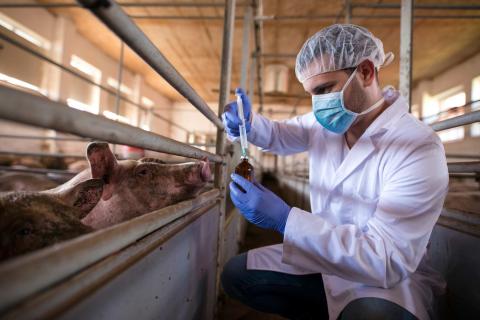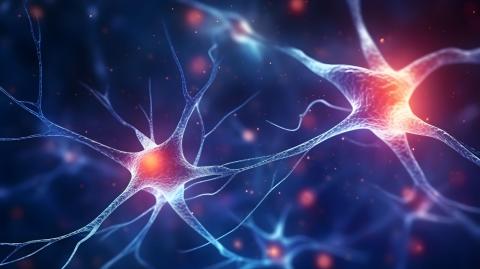University of Murcia
If you are the contact person for this centre and you wish to make any changes, please contact us.
Immunologist.
Lecturer in the Toxicology Department of the Veterinary Faculty of the University of Murcia
Head of the Cardiology Department at the Virgen de la Arrixaca Hospital and Professor at the University of Murcia
Professor of Physiology and researcher at the Faculty of Veterinary Medicine of the University of Murcia
Professor of Music at the Faculty of Education, University of Murcia, and editor of the flamenco research journal La Madrugá.
Professor of Physiology and Director of the Chronobiology Laboratory at the University of Murcia
Professor in the Department of Physiology at the University of Murcia
Full Professor in the Department of Teaching and School Organization. Member of the Educational Technology Research Group.
Professor of Toxicology in the Department of Social and Health Sciences at the University of Murcia
Principal researcher at the Murcia Institute for Biomedical Research and professor in the Department of Human Anatomy and Psychobiology at the University of Murcia

A study published in the journal Scientific Reports reveals an increase in simplicity, negativity, and stress-related words in pop song lyrics in the United States over the last few decades. The authors also conclude that this phenomenon was attenuated in times of social crisis, such as the COVID-19 pandemic, which ‘highlights the role of music in both shaping and reflecting moods.’ The data included more than 20,000 songs from the US charts between 1973 and 2023.

A review conducted by the Cochrane Collaboration analyzed the effects of colchicine—a medication commonly used to treat some rheumatic diseases—on people who had already experienced a cardiovascular event. The review included 12 clinical trials with more than 23,000 patients and concluded that colchicine reduces the risk of stroke or heart attack in these individuals. Overall, for every 1,000 people treated, there were 9 fewer heart attacks and 8 fewer strokes compared to those who did not take the medication, with no apparent serious side effects.

An international team has used the CRISPR gene-editing tool to modify a key gene for the replication of the classical swine fever virus in pigs. The experiment, conducted on four animals, showed complete protection against the disease. According to the researchers, this breakthrough could serve as an additional method for controlling this type of virus, which entails significant economic and animal welfare costs. The results are published in the journal Trends in Biotechnology.

The Karolinska Institute has awarded the Nobel Prize in Medicine or Physiology to Mary E. Brunkow, Fred Ramsdell and Shimon Sakaguchi for describing how the immune system is regulated so as not to harm us. His groundbreaking discoveries on peripheral immune tolerance have spurred the development of new treatments for cancer and autoimmune diseases.

If the United States did not change the time twice a year, there would be a lower incidence of obesity and strokes. This is the conclusion of a study by Stanford University (USA) published in PNAS that compared how three different time policies — permanent standard time (winter), permanent daylight saving time, and biannual time changes — could affect circadian rhythms and the health of the population. By modelling light exposure, circadian impacts and health characteristics county by county, the researchers estimate that permanent standard time would prevent about 300,000 cases of stroke per year and reduce the number of people with obesity by 2.6 million, compared to biannual changes. Permanent daylight saving time would also be positive, although with a smaller impact.

In 2021, the eruption of the Tajogaite volcano on the Canary Island of La Palma caused the loss of 53,000 tonnes of bananas, equivalent to 50% of its production, which is essential to the local economy. Given the potential risk of contamination from ash and magma, a team of researchers from Spanish centres analysed the composition of bananas in the area of the eruption. The study, conducted using mass spectrometry and published in PLOS One, confirms that they are safe and healthy to eat. For most potentially toxic elements, the estimated maximum intake remained below 1% of the tolerable daily intake (TDI) and in no case exceeded 3% of the TDI.

A team from Sweden has analysed post mortem brain samples from people aged between 0 and 78 using various techniques and found that, although it varies between individuals, new neurons continue to form in the hippocampus with no apparent age limit. Although previous studies had reached similar conclusions, controversy remains about these results. According to the authors, the new work ‘provides an important piece of the puzzle in understanding how the human brain works and changes throughout life.’ The results are published in the journal Science.

Aging is associated with an increase in chronic inflammation, a phenomenon known as inflammaging that is related to different diseases and that was considered universal. Now, an international team has analyzed data on 19 inflammation-associated proteins in four different populations: two industrialized (from Italy and Singapore) and two non-industrialized (the Tsimane population of the Bolivian Amazon and the Orang Asli population of Malaysia). The results show that, at least according to this form of measurement, in the non-industrialized populations there is no increase in inflammation with age, which questions whether this is a biological imperative and indicates that it would depend on lifestyles and social and cultural factors. The paper is published in letter format in Nature Aging.

A model has analysed mercury concentrations in rivers around the world from 1850 to the present day. The results, published in Science Advances, conclude that levels have doubled and even tripled since the Industrial Revolution: before 1850, rivers carried approximately 390 metric tonnes of mercury to the oceans each year, and today that figure has risen to around 1,000 metric tonnes. According to the authors, these results have implications for human health and wildlife, as mercury compounds are neurotoxic, can accumulate in fish and pose a health risk through consumption.

Lead exposure in children can affect their neurodevelopment. In the United States, the maximum blood concentration limit for this metal was lowered to 3.5 μg/dL (micrograms per decilitre) in 2021, down from 10 μg/dL in 2012. Now, a study has analysed data from more than 300,000 children in Iowa and found an association between higher concentrations and poorer school performance in reading and maths, even below the 3.5 μg/dL limit, prompting the researchers to reconsider this figure. The results are published in the journal JAMA Network Open.